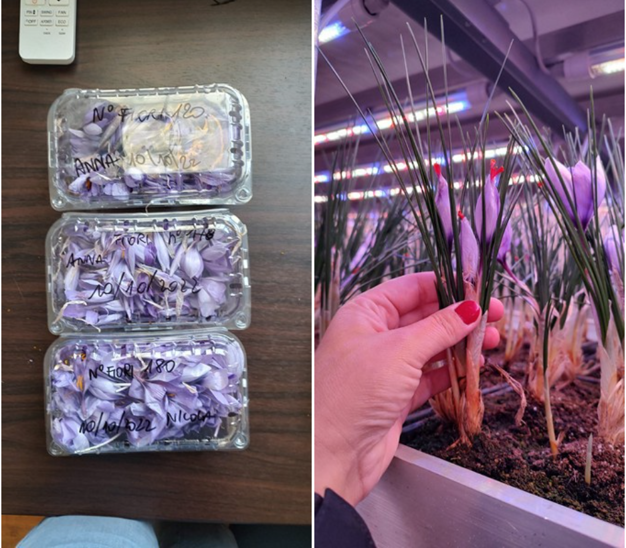Demetra containers achieve goals that would have been unimaginable just a few months ago. Daniele Bertocchi, the owner of Greatit, describes the results achieved in the vertical cultivation of saffron.
"We started with trials a few months ago, but after a thorough analysis of both the agronomy and the market with one of our customers, we are now ready to show the gathered results. These have exceeded our forecasts," Daniel affirms.
Last year, a customer from Sardinia approached Greatit with the intent of growing saffron hydroponically. And, the company accepted the challenge. However, as Daniel explains, it's a little more complex than your average crops, as there is no specific reference book on the subject. That's why Greatit has been doing extensive research and collaborating with the company's agronomist.
Get to know more about Greatit's business plan.
Greatit's client is growing saffron in a container farm that has 70.4m2 of cultivable area. The cycle lasted 37 days in total and can run nine cycles per year, reaping a total of 2 kg of dried pistils per year. Daniele explains that will give growers a return on investment within two years.

"To get to the amount of 2 kg in dried pistils on a yearly basis in the open field, you'd at least need about 1,000m2. However, our container equals that number with its multiple layers. Besides that, the product quality is outstanding, as we don't have the same risks as open-field growers do."
The chemical analysis has shown that the parameters of bittering, coloring and flavoring properties are far within the first category of conventionally grown saffron. To illustrate the outcome; the coloring power, expressed as 'crocin,' stood at 280 ± 34; the bittering power, expressed as picrocrocin, stood at 111 ± 16; and the flavoring power, expressed as 'safranal,' stood at 29.9 ± 4.0.
Meaning that these results all fall into the minimum requirements for the first category of saffron production (see table below).
According to the team, fine-tuning the technique was not easy, yet they are very content with the outcomes.
"The year 2023 is off to a very good start for us," adds Daniele, "and soon we will be delivering an additional five containers throughout the country. Customers have seen that we don't just deliver fixed containers however, we can provide an all-in-one solution for growers alongside the business plan of the client. We do that so we can verify in advance that there is economic sustainability, as well as technical and agronomic support."
For more information:
Daniele Bertocchi
+39 3249034218
d.bertocchi@greatit.it
www.greatit.it
